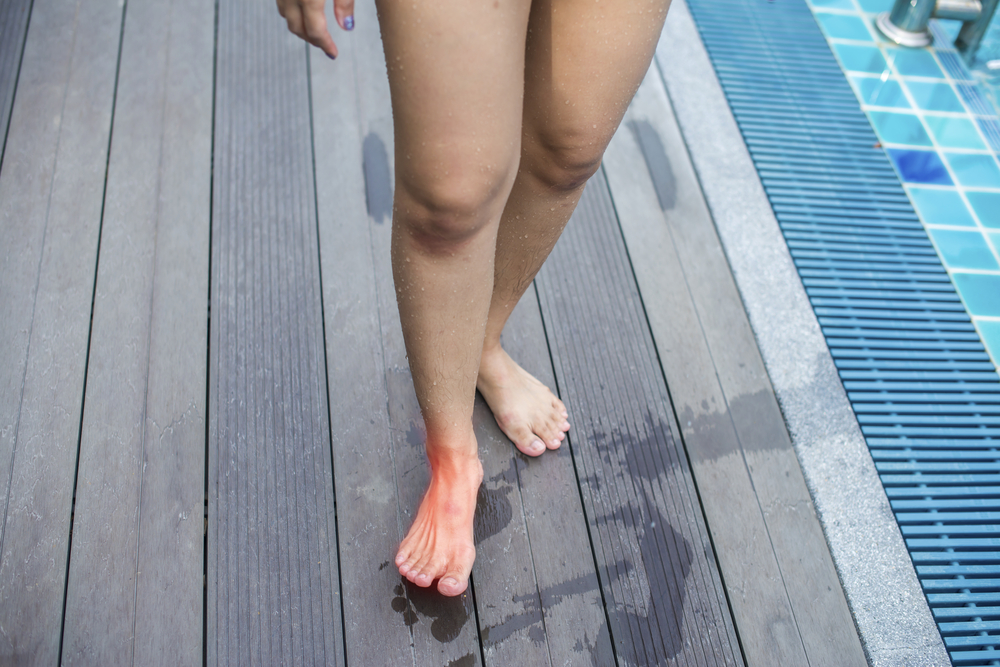
Long Islanders are rejoicing – we’re right in the heart of summer! Few places are as synonymous with summer as Long Island. With our beaches, vineyards, lighthouses, gorgeous seascapes and more, Long Island truly comes alive in the summertime. Of course, swimmers in particular have something to celebrate when temperatures rise.
While swimming is an excellent summertime exercise, the incorrect technique can have serious physical consequences. Competitive and recreational swimmers alike must exercise caution when swimming to avoid some common injuries. At Central Orthopedic, we believe that awareness and prevention are the very best treatments for these injuries. In this post, we’ll list the injuries that swimmers commonly face from improper technique, or overactivity.
This post was originally published on June 7th, 2017, and was updated for accuracy.
1. Swimmer’s Shoulder
The arm movement involved in most swimming techniques can cause significant strain for rotator cuffs or arm/shoulder muscles. Without regulation, repetition of these motions can cause tissue damage. Professionals estimate that almost everyone who swims regularly will experience some degree of shoulder pain, which will temporarily prevent swimming. Swimmer’s shoulder is the most common swimming injury, and often results from the freestyle stroke.
Swimmer’s shoulder refers to one or more of the several injuries that can result from the repetitive motion of moving one’s arms. These injuries include, but are not limited to:
- Rotator cuff impingement
- Rotator cuff tears=
- Bicep tendonitis
- Bursitis
Preventative Measures:
Ensure that your stroke and techniques are performed correctly. Pay particular attention to the way that your hands enter the water. Your entire hand should make contact with the water at the same time, as opposed to entering thumb first.
Recovery/Treatment:
Avoid causing unnecessary shoulder strain by eliminating kick boarding exercises, limiting training, and refraining from sudden increases in workout intensity. Most importantly, don’t exercise (swim) with fatigued muscles. Consult a doctor before swimming at all during the recuperation process, especially before returning to intense routines.
2. Neck Injuries
Swimming can cause significant strain on the neck as well. This is primarily due to the contortion involved in keeping the head above the water during the breaststroke, or rotating the neck to breathe during the freestyle stroke.

Preventative Measures:
Always keep your head aligned with your spine (and the rest of the body) while swimming. Instead of twisting your neck to breathe, rotate your entire body. Ultimately, honing your technique to eliminate potentially damaging neck movement is the best preventative measure for this common swimming injury.
Recovery/Treatment:
To create variety in your exercise routine, try performing some different strokes. Consult with a doctor to determine how frequently you can exercise, and the steps that you should take when doing so.
3. Breaststroke Swimmer’s Knee
The breaststroke is a comfortable and relatively relaxed style in recreational environments. In more competitive environments, however, the breaststroke can be physically demanding. By facing your feet out during the breaststroke, you may inadvertently impact the ligaments in the knee. This generally causes swelling, knee pain, and inflammation, among other symptoms, leading to issues with the medial collateral ligament. Breaststroke swimmer’s knee is also a common swimming injury.
Preventative Measures:
Avoid exercises sessions that consist only of the breaststroke. Instead,vary your routine by practicing other strokes. Additionally, improving the hip abduction angle(the angle at which your leg moves away from your hip) will help prevent unnecessary knee stress. Finally, generally improving your strength by working out is beneficial to your whole body (including the knee), and will aid in furthering the strength you need for a robust swimming routine.
Recovery/Treatment:
Tend to the injured knee by icing it regularly, at least two times per day. Follow all preventative measures in any physician-approved exercise routine.
4. Swimmer’s Ear
While not an orthopedics-related swimming injury per se, swimmer’s ear can cause quite a level of discomfort. Swimmer’s ear is primarily contracted after swimming in water with high bacteria levels.
The most common swimmer’s ear symptoms, which may manifest themselves in varying degrees or not at all, are:
- Itching
- Clogged ear canals
- Sensitive outer ear
- Muffled hearing
Mild cases may grow worse if untreated, and worse cases may cause patients to experience swelling, or even a fever.
Preventative Measures:
Avoid swimming in potentially dirty bodies of water, and carefully clean your ears with a cotton swab after swimming.
Recovery/Treatment:
Depending on the intensity of your infection, doctors will clean out your ear, and prescribe medicated drops to lessen pain and continue the cleaning process. During this process, doctors will likely recommend you refrain from swimming.
Recognize Swimming Injuries Early
Enduring the discomfort of these injuries is painful, but continuing to exercise anyway is even worse. Having awareness of these injuries, and their preventative measures, will help you to stay healthy while swimming. As pain management specialists, our staff is fully equipped to diagnose and treat these conditions.
Equally as important, during our diagnosis we will also help you to understand the source of this pain, and prevent it in future exercise. We can even provide useful insight on the best foods to eat in order to streamline your recovery. Contact us to set up an appointment if you are experiencing any of the above symptoms, or a swimming-related injury.
